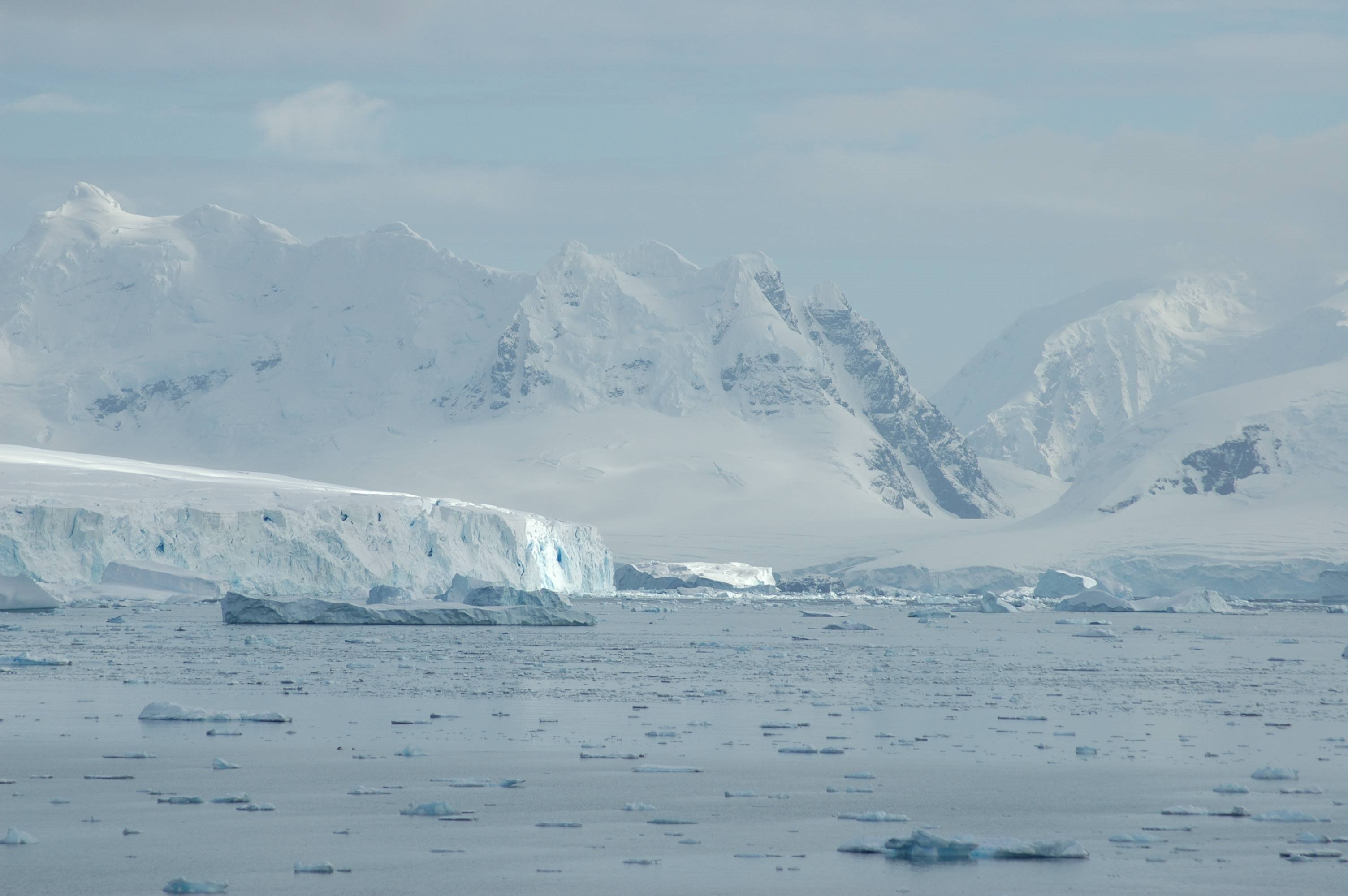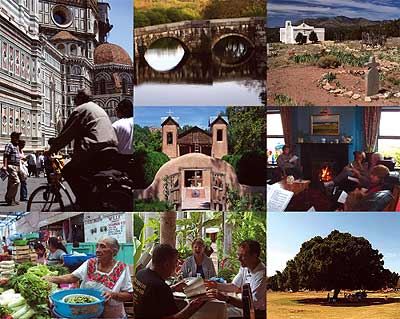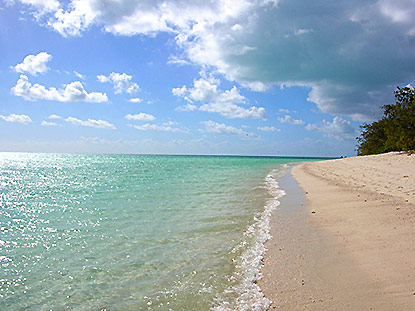The process of travel is one that has drastically affected the Earth over the millennia. As ice sheets retreated, thus revealing sections of land that connected continents that had been impenetrable just generations ago, early humans and animals were able to travel to new areas of the globe. New species emerged as various beings adapted or died out. Travel became a way of being in the time of hunters and gatherers. As one resource became depleted, on it was to the next area. Travel is an opportunity for many groups to be able to explore, discover, and hopefully adapt. However, this wonderful process does not come with out a price. Environments have been eroded, destroyed, and altered over the millennia as various species have traveled across lands and into new ones.
Throughout history, the process of human travel has been one that has lead to many unintended negative consequences. With the view that humans attempt to utilize all nature can offer, with whatever available tools, leads to very destructive outcomes. The most optimistic view of this behavior is that most environmental destruction over time was unintended. The Rapanui most likely did not intentionally create a cultural process, or bring rats to add to the deforestation, that would ultimately lead to the downfall of their civilization. Similarly, Middle Ages traders did not purposefully transport small pox to the Americas to decimate whole populations. Ultimately, travel leads to the process of adding an additional player in an ecosystem. The repercussions of the addition of another player into an environment, results in the reshuffling of hierarchies, and possibly to the extinction of some species, ultimately leading to what we can look back and label today as, environmental destruction.
One of the most notable unintended causes of human travel is the spread of diseases. With the advancement of the technology of travel, humans were able to relocate themselves to other parts of the globe, unknowingly also transporting vectors of disease at the same time. As Lillian Lam (From the 2006 class) explains in her essay:
In the mobile hunter-gatherer lifestyle, human waste was left behind at the campsite while the band moved on and was spared from exposure to potential disease-causing microorganisms. However, the shift to agriculture and settled communities forced humans to remain in close proximity to their waste products. The domestication of animals ushered in exposure to a range of animal diseases that had the ability to adapt to humans as new hosts (http://fubini.swarthmore.edu/~ENVS2/S2007/llam1/disease3.html) .
When hunter gatherers lived in small populations, the risk of infectious diseases was not high. As the onset of civilization began, people began living in close proximity to one another. This transition was one that fostered a new relationship between humans and germs.
This history is crucial in addition to the advancement of the technology of travel. Ship building, in a positive light, allowed people of the medieval world the ability to exchange ideas, techniques, and goods (foodstuffs, livestock, plants, textiles, etc) with other cultures. However, the ships were also excellent homes for rats, which acted as vectors of disease and were responsible (along with humans) for introducing new germs and pathogens to unsuspecting populations.
The bubonic plague is just one result of the trade routes that developed between Europe and the East. The rats that lived on the ships, and were unintendedly transported back and froth, carried fleas that were infected with the plague. The rats lived in close proximity with the people, thus transmitting fleas to people, who consequentially were bitten, and infected with the plague. This unintended travel and transport of diseases was a cost that was paid with millions of European lives and had negative impacts on many nations (Diamond 6). Unfortunately, the Europeans were not the only humans that were affected by the transport of germs and disease. With the continued valiant efforts of explorers, the Americas were eventually discovered.
Because Europeans had a long history of living in close proximity with animals, often sharing close quarters with various livestock, Europeans, over time, built up immunities from various diseases. They also had a long history of epidemics resulting from this living situation. Over time, Europeans were able to build up resistance from these animal related diseases. When the Europeans interacted with the natives, who had previously never encountered or experienced such diseases before, the result of spreading such strains of diseases were atrocious. The decimation of entire villages, with diseases such as smallpox, had a detrimental effect upon the Native Americans. Because of the Europeans’ “luck” that the natives were susceptible to their diseases allowed them a relatively easier ability to colonize and subjugate the disease-stricken natives (Diamond 6).
The spread of germs is an unintended result of travel that has a definite harmful effect upon the environment. The result of introducing new pathogens and germs into systems not adapted to them will have adverse effects. This process is still a threat today, even at our highly advanced technical age. As air travel increases the speed and rate at which humans interact with various cultures around the world, diseases and germs can be easily spread around the world at a rate not imaginable several hundred years ago. The recent SARS epidemic in China is a perfect example (http://en.wikipedia.org/wiki/SARS) . The outbreak of SARS and its transmission through infected individuals traveling by plane is a hyper-sped- up version of the Europeans and ship transported pathogens. This constant flow of pathogens and germs in and out of environments has been limited by scientific breakthroughs of vaccinations. However, outbreaks such as SARS is an example of how vulnerable our environments are and how easily one mutant can lead to massive panic and epidemics.
Disease is not the only unintended result of travel. Destruction is easily another byproduct of humans and animals violently interrupting environmental balance. The process of travel has allowed humans to not only transmit germs and pathogens to unresistant peoples, but also the ability to physically alter the environments they encounter. Human ingenuity and human will to survive would not allow for explorers to simply sit on board their vessels, peaceably observe the wondrous resources and great opportunities, wave goodbye, and travel back home. The Europeans, as well as the hunter gatherers, saw nature’s blessings as an opportunity and as a bountiful resource to take and be productive with. And productive is what humans were for many years. Unfortunately, this attitude does have negative effects upon environments. There is no such thing as limitless resources. This is a concept we are slowly realizing to this date.
As early as the time of the Rapanui, who sailed in tiny vessels to what became known today as Easter Island, the problem of facing limited resources has been a problematic experience. The Rapanui had the unfortunate cultural inclination to hold the building of large statues as a measure of cultural status. The specific cultural drive behind the Moai, large stone heads, is unknown to us today; however the effect this tradition had on the environment can be observed. Because the moai required tracks to be built to move the large stone blocks to the building site, the Rapanui cut down the trees on the island to assist in this process (Hunt 1). This cultural practice eventually caused the deforestation of the island and to the collapse of the Rapanui civilization. The rats that were transported by their vessels also assisted in this deforestation processes.
Even today we are guilty of viewing our resources as limitless. Take the crisis our oil-dependent nation faces today as we (along with other industrialized nations) are rapidly depleting Earth’s natural oil reserves. The ability we have at the present to travel to remote parts of the world, with the purpose of exploiting resources, is not a new process. As technology advances, so does the range of the globe we can travel to. Today we can travel to the remote, frozen, barren, artic tundra to dill for oil – a feat once unimaginable. The ease at which humans can travel increases the intensity of destructive behavior upon various environments.
The correlation between the advancement of travel technologies and the destruction of the environment in this assessment is very strong. The introduction of new actors into an environment, that travel requires, has detrimental effects on the ecosystem, and on the environment as a whole. As the ease, speed, and range of human travel increases, so does the opportunity of extracting resources; thus increasing the negative impact on the environment. Although difficult, it is important to keep the concept of sustainability in the back of our minds as we can travel to remote areas of the globe and remove valuable resources. These resources do have limits. The SARS epidemic and the travel and transport of similar sorts of outbreaks reminds us that our environment is fragile, and the introduction of mutated pathogens can tip the scale against our favor. Ultimately the opportunities travel presents to humanity are exciting and innovative; however, we must remind ourselves that we are a part of the environment, and ultimately our actions can have negative effects from which we can’t travel away from forever.
Sources:
Diamond, Jared, "Ch. 11: Lethal gift of livestock," in "Guns, Germs, and Steel" W.W. Norton & Co, 1997, ISBN 0-393-03891-2, pp. 195-214
Hunt, Terry L. Rethinking the Fall of Easter Island; American Scientist Online, September - October 2006. Pg 1- 9
Lam, Lillian.The Spread of Infection Diseases: Past and Present. 1/25/06.


